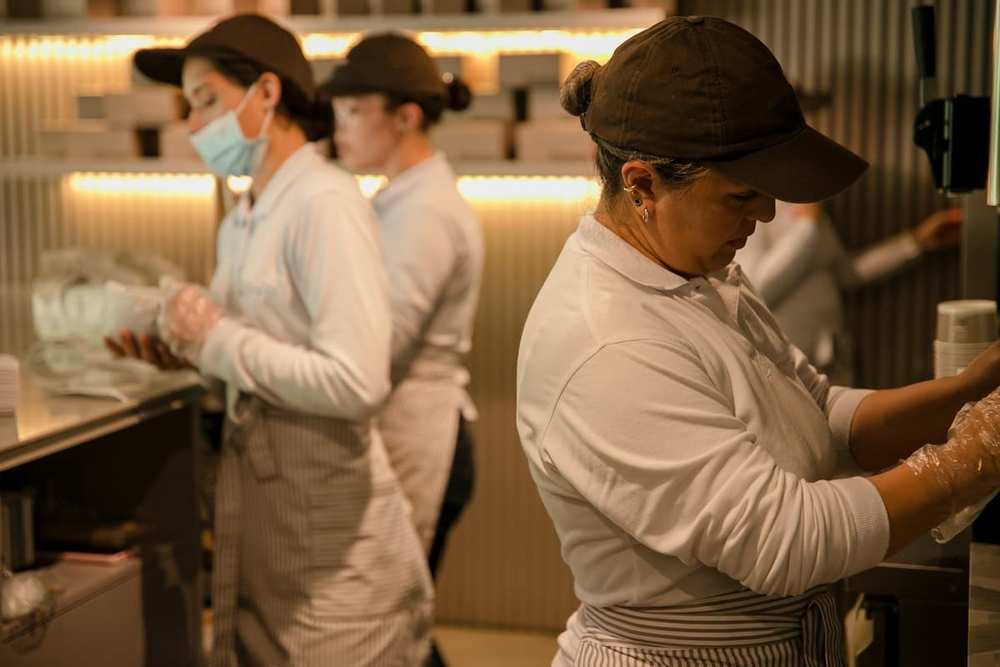Mastering restaurant management: how to increase profitability and streamline operations
Table of Contents
CloudKitchens
How many tacos can be delivered from a 1000sqft restaurant?
The same amount as a 200sqft ghost kitchen.
Managing a restaurant successfully requires a delicate balance between maximizing profits and ensuring operational efficiency. In an industry known for its slim margins and high competition, understanding financial metrics, optimizing resources, and avoiding common mistakes are essential steps toward profitability.
This guide delves into key strategies and insights to help restaurant owners and managers enhance their establishments’ financial health and operational performance.
Understanding restaurant profit margins
Profit margin is a critical indicator of a restaurant’s financial health, representing the percentage of revenue that exceeds expenses. It provides insight into how well a restaurant manages its costs relative to its sales.
Average restaurant profit margins
The average profit margins in the restaurant industry can vary widely based on factors such as location, type of cuisine, and operational efficiency. Generally, profit margins range between 3% to 6%, with some establishments achieving higher margins through effective cost control and optimized operations.
Understanding where your restaurant stands in comparison to industry averages is crucial for setting realistic financial goals.
Calculating gross profit margin
Gross profit margin focuses on the profitability of a restaurant’s core activities, excluding overhead costs. It is calculated using the formula:
Gross Profit Margin (%) = [(Total Revenue – Cost of Goods Sold) / Total Revenue] × 100
For example, if your restaurant’s total revenue for a month is $50,000 and the cost of goods sold (COGS) is $20,000:
- Gross profit: $50,000 – $20,000 = $30,000
- Gross profit margin: ($30,000 / $50,000) × 100 = 60%
A 60% gross profit margin indicates that 60% of your revenue remains after covering the direct costs of producing the food and beverages sold. Monitoring this metric helps in assessing the efficiency of your menu pricing and cost control measures.
Read more: From prep to profit: how to optimize food production in ghost kitchens
Strategies to maximize occupancy rate
Maximizing occupancy rate is vital for increasing revenue, as more guests translate to higher sales. Here are strategies to ensure your restaurant operates at its full seating potential:
- Reservation management: Implement an efficient reservation system to manage bookings and reduce no-shows. Offering online reservations can enhance convenience for customers.
- Dynamic seating arrangements: Adjust seating layouts based on party sizes and peak times to accommodate more guests without compromising comfort.
- Off-peak promotions: Offer special deals during traditionally slower periods to attract customers and boost occupancy during those times.
- Event hosting: Organize events, such as live music or themed nights, to draw in crowds and create buzz around your establishment.
- Efficient table turnover: Train staff to provide prompt service without rushing guests, ensuring tables are ready for the next party in a timely manner.
By focusing on these areas, you can enhance the dining experience and encourage repeat visits, leading to sustained occupancy rates.
Read more: How to host a cocktail hour for companies?
Common mistakes leading to profitability failure
Avoiding common pitfalls is essential to maintain and improve profitability. Some frequent mistakes include:
- Neglecting cost control: Failing to monitor and manage expenses, such as food and labor costs, can erode profit margins.
- Inconsistent quality: Variations in food quality or service can deter customers, affecting repeat business and reputation.
- Poor inventory management: Overstocking or understocking can lead to waste or menu shortages, both of which impact profitability.
- Lack of marketing efforts: Not investing in marketing can result in low visibility and customer turnout.
- Ignoring customer feedback: Disregarding feedback can prevent you from addressing issues that may be driving customers away.
Recognizing and addressing these mistakes promptly can safeguard your restaurant from financial setbacks.
Read more: Menu costing for restaurants: Maximize your profitability
Setting profitable and competitive selling prices
Establishing the right pricing strategy is crucial for maintaining profitability while staying competitive in the market. A well-balanced approach ensures that your restaurant covers its costs, attracts customers, and maximizes revenue. Here’s how to achieve that balance:
Analyze all costs
Calculate the total cost of each menu item, including raw ingredients, preparation time, labor, rent, utilities, and other overhead expenses. This helps determine the minimum price required to cover costs and generate a profit.
Understand market trends
Research local competitors’ pricing strategies and industry trends to ensure your pricing remains competitive. Pricing too high can drive customers away, while pricing too low can shrink profit margins.
Leverage psychological pricing
Using strategies such as pricing just below a round number (e.g., $9.99 instead of $10) or offering bundled deals can make items seem more attractive to customers.
Assess perceived value
Consider what customers are willing to pay based on your restaurant’s location, ambiance, service, and uniqueness of offerings. Higher-end establishments can justify premium pricing through superior quality and experience.
Introduce tiered pricing and upselling
Offering different portion sizes, add-ons, or combo deals can cater to varying customer preferences while boosting overall revenue.
Regularly review and adjust
Costs fluctuate over time, so it’s essential to periodically evaluate your menu prices. Implement small, incremental price adjustments rather than sudden large hikes to maintain customer trust.
Read more: How to successfully promote your restaurant and build a loyal customer base with 12 tips!
7 tips to improve business profitability
Enhancing your restaurant’s profitability involves strategic planning and continuous improvement. Here are seven actionable tips:
1. Optimize menu offerings
Regularly analyze sales data to identify and promote high-margin items. Consider removing low-performing dishes that do not contribute significantly to profits.
2. Control food costs
Establish strong relationships with suppliers to negotiate better prices, buy seasonal produce, and implement portion control to reduce waste.
3. Enhance staff efficiency
Invest in training programs to improve service quality and efficiency. Well-trained staff can upsell effectively and provide a better customer experience, leading to repeat business.
4. Leverage technology
Utilize modern POS systems, inventory management software, and online reservation platforms to streamline operations and reduce manual errors.
5. Implement marketing strategies
Engage in targeted marketing campaigns through social media, email newsletters, and loyalty programs to attract and retain customers.
6. Monitor financial metrics
Keep a close eye on key performance indicators such as food cost percentage, labor cost percentage, and net profit margin to make informed decisions.
7. Reduce operational waste
Implement sustainable practices such as energy-efficient appliances, water conservation, and waste reduction to lower overhead costs and improve sustainability.
Take control of your restaurant’s profitability
Running a successful restaurant requires a deep understanding of financial metrics, efficient operations, and strategic planning. By improving occupancy rates, avoiding common mistakes, setting competitive prices, and leveraging technology, you can significantly boost profitability.
By taking proactive steps today, you can ensure long-term success and growth for your restaurant. At CloudKitchens, we offer innovative solutions to help restaurants streamline operations, cut costs, and maximize efficiency. Our smart commercial kitchen facilities and integrated technology make it easier to manage inventory, optimize logistics, and enhance profitability. Check it out now!
DISCLAIMER: This information is provided for general informational purposes only and the content does not constitute an endorsement. CloudKitchens does not warrant the accuracy or completeness of any information, text, images/graphics, links, or other content contained within the blog content. We recommend that you consult with financial, legal, and business professionals for advice specific to your situation.
More insights & stories
There’s more where that came from.
Get in the know and check out our additional insights


